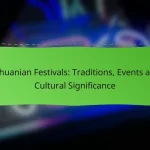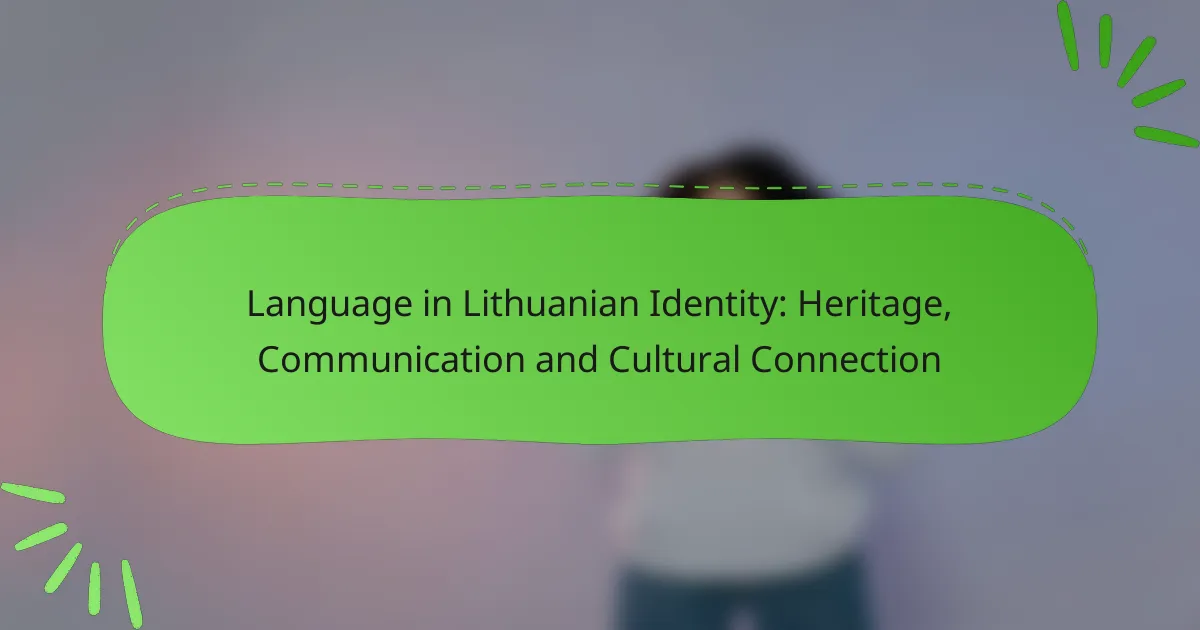Lithuanian festivals are a vibrant celebration of the country’s rich cultural heritage and traditions, showcasing the unique customs that define its national identity. These events feature an array of activities, including folk music, dance, traditional crafts, and seasonal rituals, all of which foster community spirit and pride among participants. Through these festivals, Lithuanians connect with their history and regional uniqueness, creating a tapestry of cultural expression that is both meaningful and engaging.
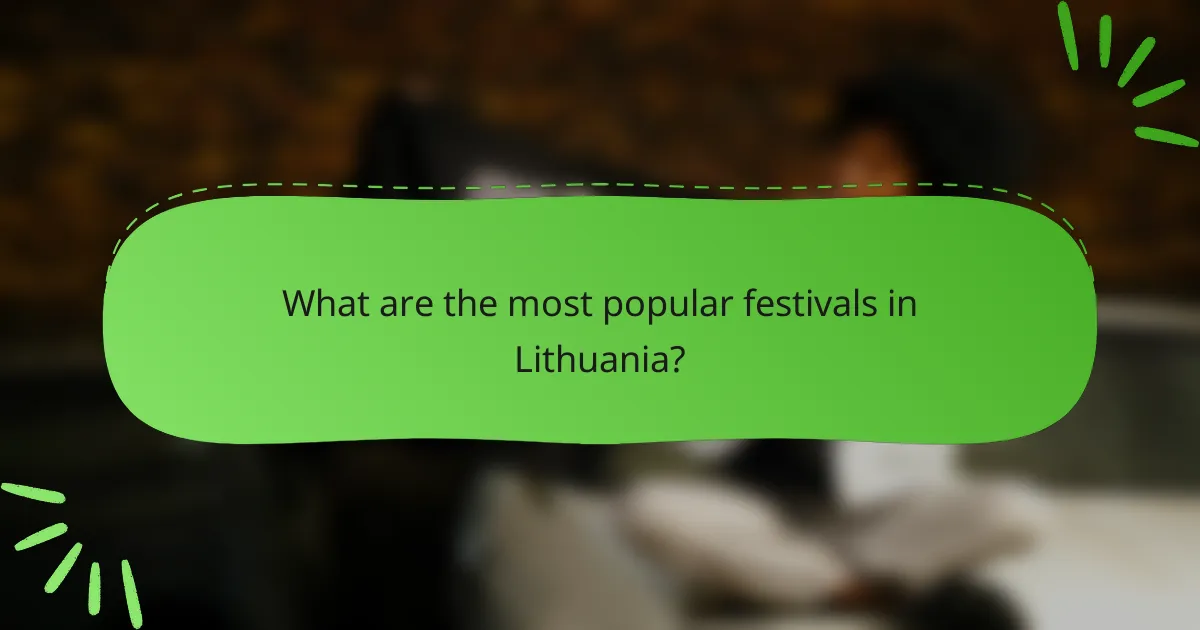
What are the most popular festivals in Lithuania?
The most popular festivals in Lithuania celebrate the country’s rich cultural heritage and traditions. These events often feature music, dance, food, and various activities that reflect the local customs and community spirit.
Užgavėnės
Užgavėnės is a vibrant pre-Lenten festival celebrated with lively parades, masks, and traditional foods. It typically takes place in February or early March, marking the end of winter and the arrival of spring.
During Užgavėnės, participants wear elaborate costumes and masks, often representing various characters from folklore. The festival includes activities such as pancake-making contests and folk music performances, creating a festive atmosphere.
Jūratė and Kastytis Festival
The Jūratė and Kastytis Festival, held in Palanga, celebrates the legendary love story of the sea goddess Jūratė and the fisherman Kastytis. This event usually occurs in the summer and features a variety of cultural activities.
Visitors can enjoy concerts, theatrical performances, and art exhibitions inspired by the myth. The festival emphasizes the importance of the sea in Lithuanian culture and often includes beach activities and local crafts.
Vilnius City Fiesta
Vilnius City Fiesta is an annual celebration that showcases the capital’s diverse culture and vibrant community. Taking place in early September, this festival features music, dance, and various performances throughout the city.
During the fiesta, streets are filled with artists, musicians, and vendors offering local delicacies. It’s an excellent opportunity for visitors to explore Vilnius’s historic sites while enjoying a lively atmosphere.
Kaunas Jazz Festival
The Kaunas Jazz Festival is a prominent event in Lithuania’s music calendar, attracting jazz enthusiasts from around the world. Typically held in late April, the festival features both local and international artists performing across various venues in Kaunas.
Attendees can enjoy a range of jazz styles, from traditional to contemporary. The festival often includes workshops and discussions, making it a great platform for learning and appreciation of jazz music.
Šv. Jono Festival
Šv. Jono Festival, or St. John’s Festival, celebrates the summer solstice and is marked by traditional rituals and festivities. This event usually occurs in late June and is one of the most significant celebrations in Lithuania.
Activities include bonfires, singing, and dancing, with a strong emphasis on nature and the changing seasons. The festival is a time for community bonding, and many people participate in various cultural performances and local food tasting.
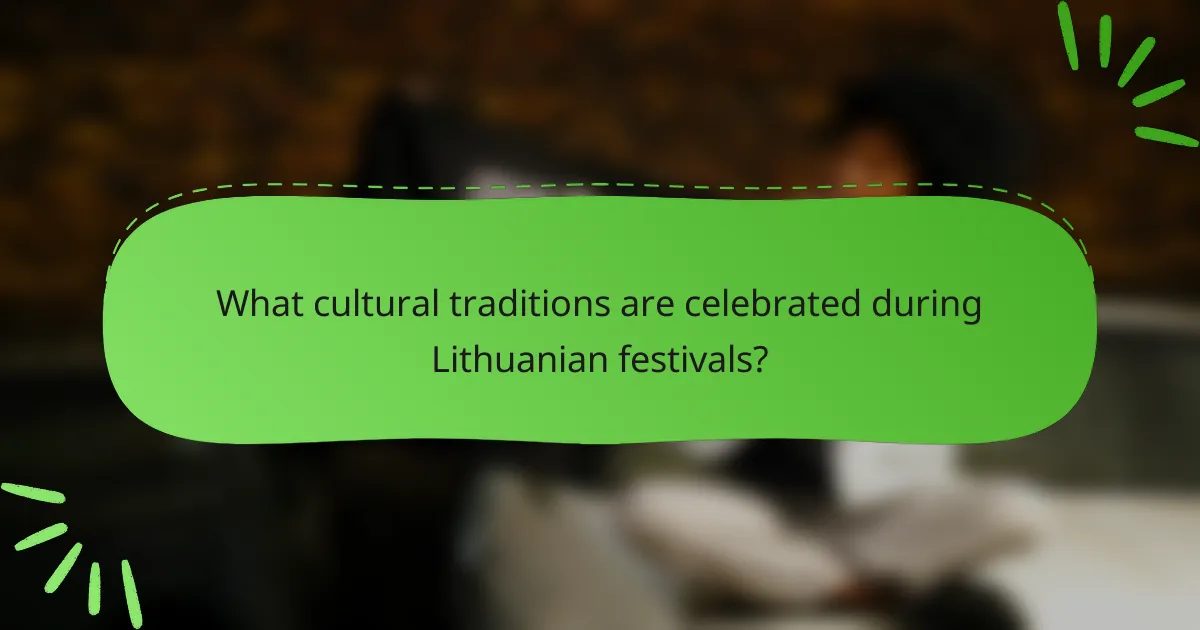
What cultural traditions are celebrated during Lithuanian festivals?
Lithuanian festivals celebrate a rich tapestry of cultural traditions that reflect the country’s history and heritage. Key elements include folklore music and dance, traditional crafts and arts, and seasonal rituals, each contributing to the vibrant community spirit and national identity.
Folklore music and dance
Folklore music and dance are integral to Lithuanian festivals, showcasing the country’s unique cultural expressions. Traditional instruments like the kanklės (a type of zither) and the birbynė (a woodwind instrument) often accompany lively dances such as the šokiai, where participants wear colorful folk costumes.
During festivals, groups perform these dances in public squares, inviting attendees to join in. This participatory aspect fosters a sense of community and preserves the cultural heritage for future generations.
Traditional crafts and arts
Traditional crafts and arts play a significant role in Lithuanian festivals, highlighting the skills passed down through generations. Artisans often display handmade items such as pottery, weaving, and wood carving, which reflect local styles and materials.
Workshops and demonstrations are common, allowing festival-goers to engage directly with the crafts. This interaction not only promotes appreciation for these art forms but also encourages the preservation of traditional techniques.
Seasonal rituals
Seasonal rituals are celebrated throughout the year in Lithuania, marking important agricultural and natural cycles. Festivals like Užgavėnės, which occurs before Lent, feature masquerades and feasting, symbolizing the end of winter and the arrival of spring.
These rituals often include elements of folklore, such as the lighting of bonfires or the singing of traditional songs, which serve to connect communities with their agrarian roots and seasonal changes. Engaging in these practices helps to strengthen cultural identity and community bonds.
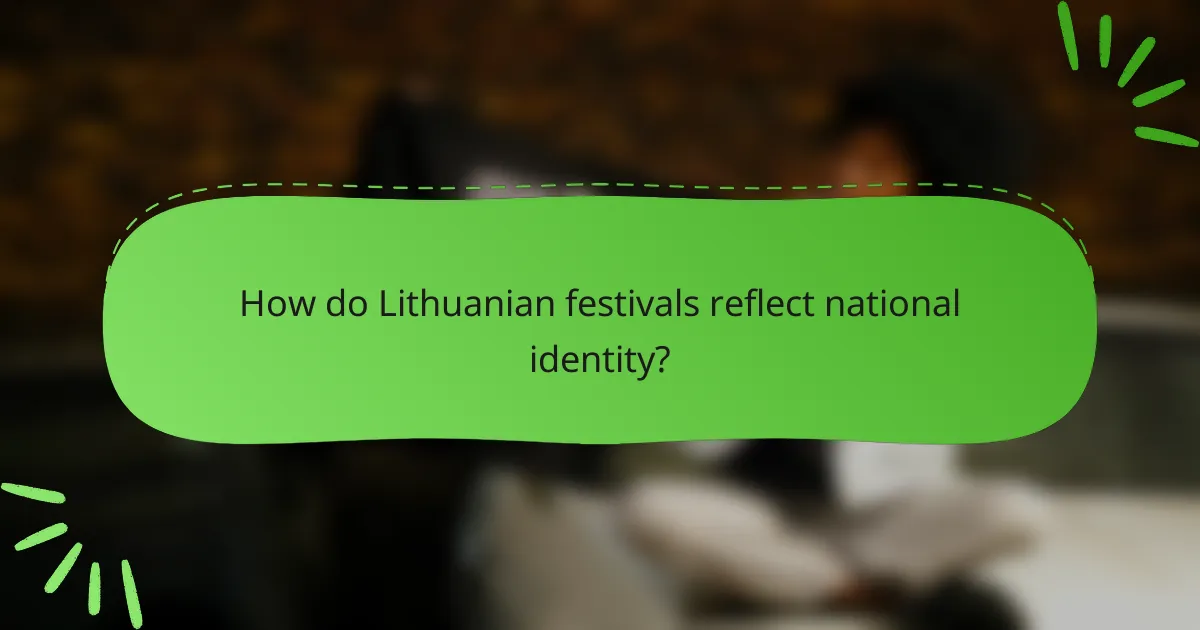
How do Lithuanian festivals reflect national identity?
Lithuanian festivals are a vibrant expression of national identity, showcasing the country’s rich cultural heritage and traditions. These events foster a sense of community and pride, connecting people to their history and regional uniqueness.
Promotion of folklore
Lithuanian festivals prominently feature folklore, including traditional music, dance, and crafts. Events like Užgavėnės, which marks the end of winter, highlight folk costumes and local legends, allowing participants to engage with their cultural roots.
Folklore promotion not only preserves ancient customs but also educates younger generations about their heritage. Festivals often include workshops and performances that encourage active participation, making folklore accessible and relevant.
Celebration of historical events
Many Lithuanian festivals commemorate significant historical milestones, reinforcing national pride. For instance, the Day of Restoration of the State on February 16 celebrates the declaration of independence in 1918, featuring parades and public gatherings.
These celebrations serve as reminders of Lithuania’s resilience and the importance of sovereignty. They often include speeches from leaders and cultural performances that reflect the nation’s journey through history.
Showcasing regional diversity
Lithuanian festivals highlight the diverse cultural expressions found across different regions. Events like the Vilnius City Fiesta celebrate urban culture, while rural festivals, such as the Jūratė and Kastytis Festival, focus on local traditions and customs.
This regional diversity is showcased through local cuisine, crafts, and dialects, allowing visitors to experience the unique characteristics of each area. Festivals often feature regional competitions, promoting local artisans and fostering community spirit.

What are the key elements of festival planning in Lithuania?
Key elements of festival planning in Lithuania include community involvement, budget considerations, and logistics. Each aspect plays a crucial role in ensuring the festival’s success and cultural relevance.
Community involvement
Engaging the local community is essential for festival planning in Lithuania. This can involve collaborating with local artists, businesses, and volunteers to create a festival that reflects the cultural identity of the area.
Community involvement not only enhances the festival’s authenticity but also fosters a sense of ownership among residents. Organizers should consider hosting planning meetings and workshops to gather input and encourage participation.
Budget considerations
Budgeting is a critical aspect of festival planning, as it determines the scale and scope of the event. Organizers should outline all potential expenses, including venue rental, permits, equipment, and marketing.
Funding can come from various sources, such as local government grants, sponsorships, and ticket sales. It’s advisable to create a budget that allows for flexibility, accommodating unexpected costs while ensuring the festival remains financially viable.
Logistics and permits
Logistics and obtaining necessary permits are vital for a smooth festival operation. Organizers must secure permits from local authorities well in advance, which may include health and safety regulations, noise ordinances, and crowd control measures.
Additionally, planning logistics involves coordinating transportation, setting up stages, and ensuring adequate facilities for attendees. A detailed timeline and checklist can help keep the planning process organized and on track.
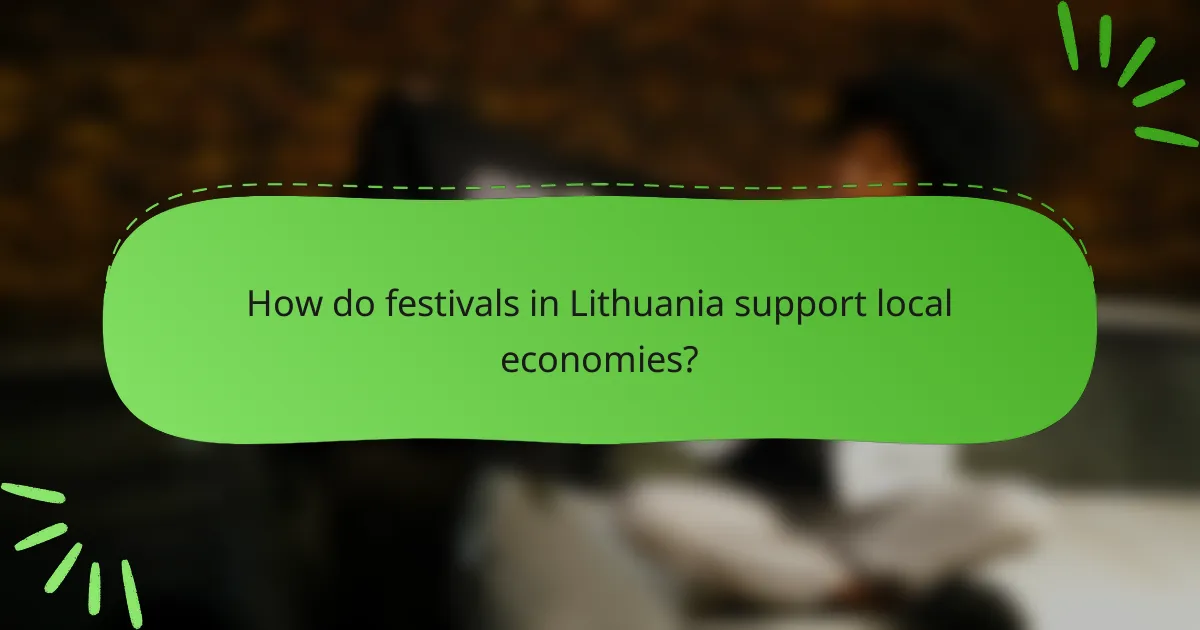
How do festivals in Lithuania support local economies?
Festivals in Lithuania significantly bolster local economies by attracting visitors and stimulating various sectors. These events create opportunities for revenue generation, job creation, and the promotion of local culture and products.
Boosting tourism
Festivals serve as major attractions for both domestic and international tourists, leading to increased foot traffic in host cities. Events like the Vilnius Festival or the Kaunas Jazz Festival draw thousands of visitors, which enhances local hospitality services, including hotels, restaurants, and transport.
Tourism-related spending during festivals can range from hundreds to thousands of euros per visitor, depending on the event’s scale and offerings. This influx of tourists not only benefits the immediate area but also promotes Lithuania as a cultural destination on the global stage.
Supporting local businesses
Local businesses thrive during festivals as they cater to the increased demand for food, crafts, and entertainment. Vendors often report a significant boost in sales during these events, with many small businesses relying on festival traffic for a substantial portion of their annual income.
Additionally, festivals often feature local artisans and producers, providing them with a platform to showcase their goods. This not only helps sustain local economies but also fosters a sense of community and pride in Lithuanian culture.
